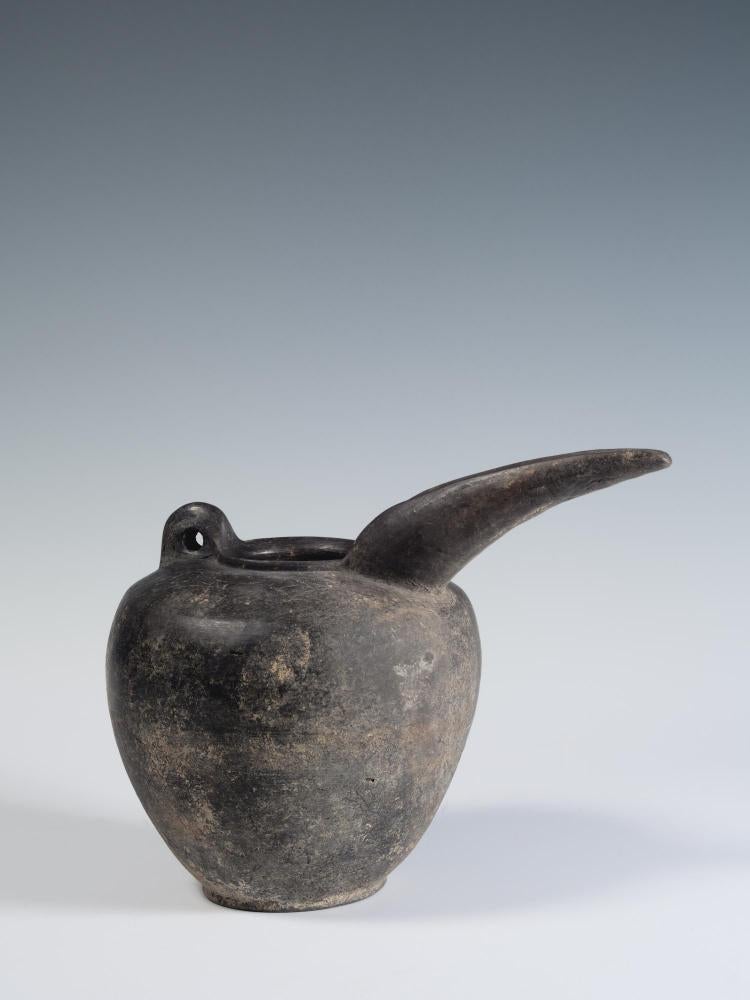2006.31.T, Grey-ware Spouted Beaker
Catalogue Entry

Gift to CU Classics Department
Transferred to CU Museum of Natural History
Transferred to CU Art Museum (2006)
Height: 20 cm
Diameter (max.): 27.3 cm
Date: Late 2nd or early 1st millennium B.C.E.
Origin: Tepe Sialk (Iran)
Description: Large jug with flat base, rounded body, and no neck. Long, curved, beak-like spout protrudes from top of shoulder. Spout has a deep, narrow channel that is exposed along its top. Hole at back of spout allows connection with interior of vessel. Small, bubble-like handle on shoulder opposite spout. Entire vessel is a glossy black.
Additional photos of this vessel show details of its base, beak, mouth, and body.
Discussion
This pot is a great example of how the Internet can faciltate scholarly exchange! An earlier interpretation of this vessel, which is posted in full below, offered no secure identification and suggested a Middle Bronze Age date. Professor Andrea Berlin (University of Minnesota), however, later provided the following comments:
"This is almost certainly from the region of the western Iranian site of Tepe Sialk, and dating from the later second millennium (or perhaps the early first millennium) - in other words Late Bronze or early Iron Age. Such spouted vessels are a hallmark of that region's ceramics. For a quick comparison, look at Edith Porada's The Art of Ancient Iran (Crown Publishers, 1965), p. 107, pl. 26. While none of these are a precise match, you'll see that your vessel's body shape is similar to that in the upper left, while the spouts appear on two other vessels on that page" (personal communication, 08/18/05).
Original Post
Do you recognize this beaker?
This beaker is something of a mystery. Several experts have been consulted, but they were unable to pinpoint its exact identity. The beaker has a height of 20.3 cm and a maximum width of 27.94 cm from the tip of the spout to the opposite rim. It is has a burnished, grey slipped surface. Its long, narrow, and curved spout (imagine sticking your tongue out and curling it) is connected to the mouth and shoulder of the vessel. There is a hemispherical, ear-like handle with a hole in it that projects upward from the shoulder and mouth of the pot on the opposite side of the spout. The clay is fired gray. The pot is possibly Middle Bronze Age, and, based on the fabric, perhaps from northern Greece or Anatolia.
Reference
- Chara Tzavella-Evjen, Greek and Roman Vases and Statuettes from the University of Colorado Collection (Athens: Archaiologikon Deltion, 1973): 192-197.

